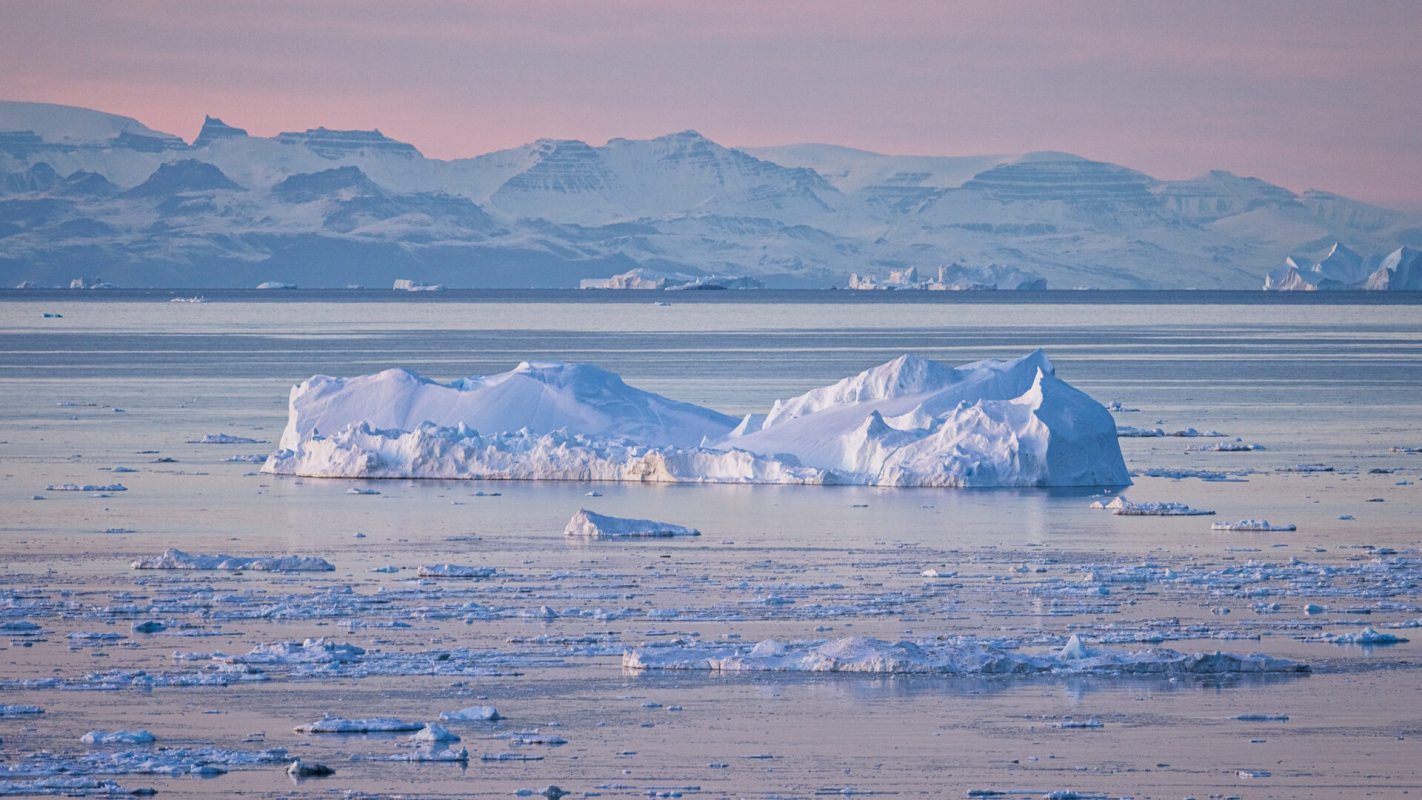Researchers from the University of Copenhagen thought they had discovered a new contender for the Arctic's northernmost island — but the mysterious "ghost island" was actually just a dirty iceberg off the coast of Greenland.
Initially, the team believed the island, measuring 100 by 200 feet and rising about nine feet above sea level, was Oodaaq, a gravel bank island discovered in 1978. However, as TreeHugger reported, the coordinates of the mysterious mass placed it nearly half a mile northwest of Oodaaq, raising questions and excitement about the new discovery.
The team proposed the name "Qeqertaq Avannarleq" for the island, which translates to "the northernmost island"' in Greenlandic — an apt name for the possible record-breaker. However, a follow-up expedition in the summer of 2022 added a dirty lens to the sparkly, new island.
Using laser scans to perform detailed measurements, the expedition concluded that the island was a large grounded iceberg similar to Oodaaq and other "ghost islands" that have been discovered and mysteriously disappeared in the past.
"They are typically 20 to 30 meters [66 to 98 feet] thick, with a thin surface layer of soil and pebbles," Rene Forsberg, an expedition member and a professor of geodesy and Earth observation at the Technical University of Denmark, said according to TreeHugger.
"Our new studies show unequivocally that all these reported 'islands' are flat icebergs," Forsberg added. "They can be categorized as semi-stationary ice islands, which may well have a lifespan of up to several years."
It's thought that the icebergs are covered in layers of deposits coming from "floating glacier tongues" about 25 to 30 miles west of Cape Morris Jesup — the world's largest island and the northernmost extremity of Greenland.
While these "ghost islands" remain a mysterious icy phenomenon, the clarification of the masses as grounded icebergs, that can be submerged by things like storms, is a great help to researchers in mapping Greenland's territory.
Although Forsberg told The Guardian UK that the island's appearance was not directly caused by global warming, he added that it was now two to three meters thick in summer. When he first visited in 1978, the island was about four inches thick, suggesting that rising temperatures may be impacting researchers' abilities to discover these land masses.
"The fact that they are icebergs and not small islands will solve some of the mess the small islands have caused in relation to the mapping of Greenland," Morten Rasch, senior consultant in geosciences and natural resource management at the University of Copenhagen, told TreeHugger. "Now you can draw a map and be sure that it will last for many years to come."
Join our free newsletter for cool news and cool tips that make it easy to help yourself while helping the planet.









